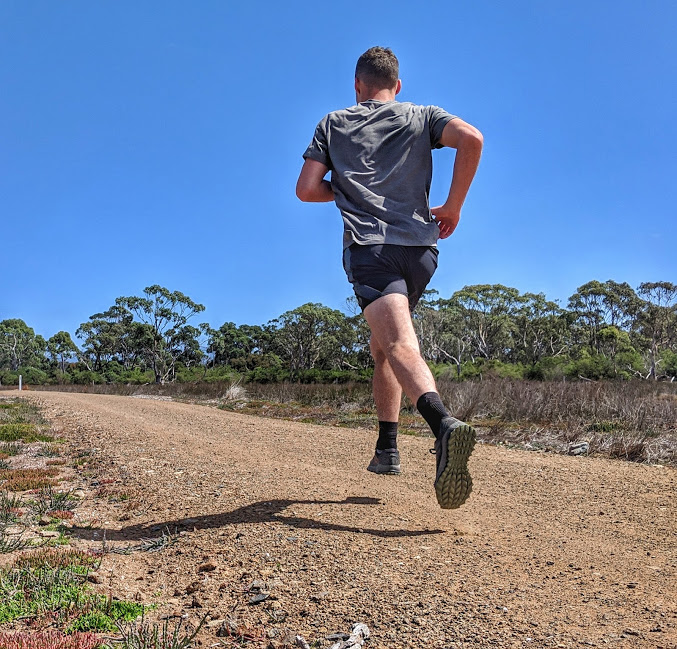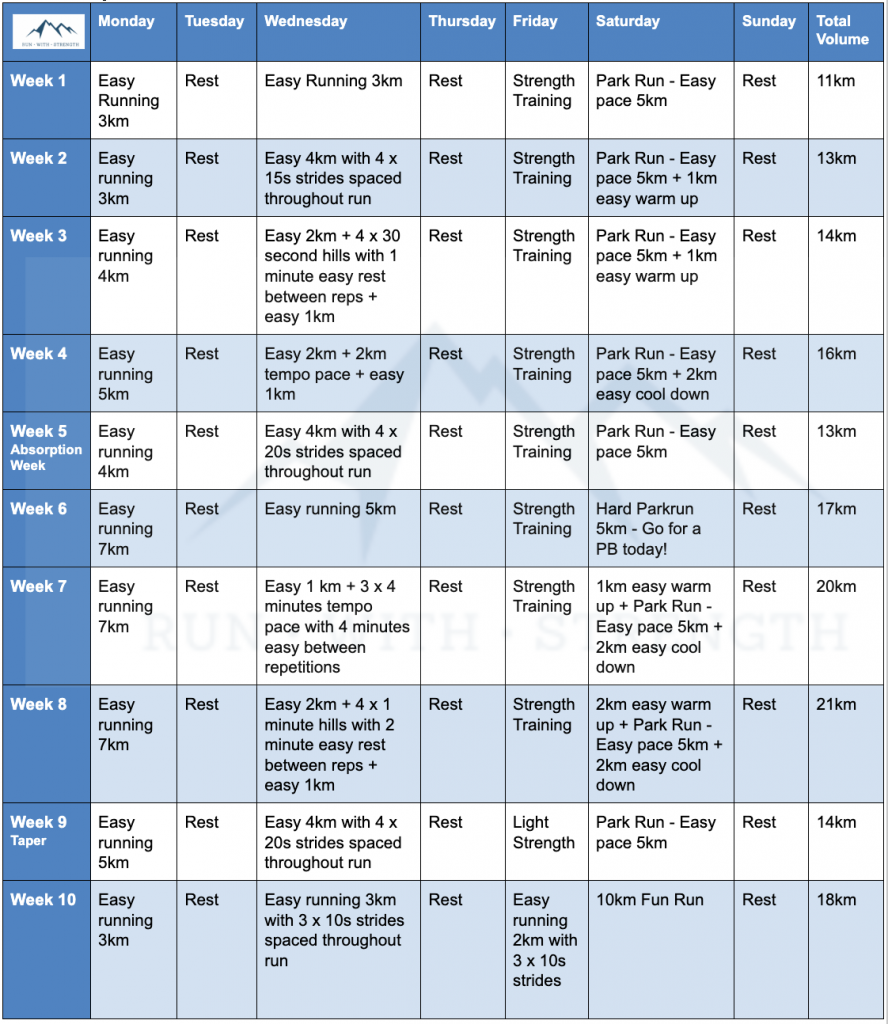Our couch to 10k beginner running program is made for those who want to start running more but aren’t sure of how to go about it. We know many people think the idea that humans were born to run does not apply to them. This program aims to make you believe you were born to run and get you out on the trails as soon as possible. This program also reduces Injury Risk, by slowly building your running ability rather than throwing you in the deep end.
This program is written by Sam Allman, Physiotherapist and Level 2 Athletics Australia Qualified Run Coach. Work with Sam via Online Run Coaching, Online Rehab Coaching or Online Running Physiotherapy Appointments.

Before you start our couch to 10k running program, be sure to read our article on the 5 steps to become a runner.
Couch To 10k Training Sessions
We have set out a 10 week beginner running program to get your running career off the ground. The program includes all the basic principles needed to create a life long runner: Strength. Endurance. Speed. This program is a general program for anyone who is able to run for at least 5 minutes (at any pace) without stopping. If you aren’t quite at this point, check out our walk/run program (coming soon).
Below we outline each type of training session, with a calendar to keep you on track for the 10 weeks. We have decided not to go into complicated things like heart rate training etc, as it is unnecessary for beginners. Check out article on the 80:20 method of endurance training if you want to learn more about heart rate training and rate of perceived exertion (RPE). This program is a general program. If you want a tailored coaching experience to really get you running career going, head to our ONLINE COACHING PAGE for more information!
Below we outline the different elements of the training program:
1. Low Intensity (easy) Runs
Most new runners run too fast. Regularly running at a pace where your breathing is laboured significantly increase fatigue and injury risk. This is why low intensity runs will make up approximately 80% of your running training. Low intensity runs are your every day runs, which should be run at “Conversational Pace”. That is, an easy pace where you can maintain a conversation without hyperventilating or blurting out each word.
In the first two weeks, it is ok to walk for short periods of your runs. After the first 2 weeks, try slowing your pace down rather than walking when you feel the urge to stop.
2. Hill Sessions
Hill running is the secret weapon of any serious runner. Uphill running helps increase lower limb strength and aerobic fitness. It also reduces injury risk as it involves less joint load than flat ground running. Read more about the benefits of hill running here.
The hill sessions in this program are broken into repeat intervals. Aim to use a hill you can run up, so don’t go too steep!
Focus on steady running uphill for the allotted time, with slow jogging rest breaks downhill.
3. Interval/tempo
Workouts that refer to tempo pace is a pace that is “comfortably hard”. That is, your breathing is more laboured but you can say a short 3-4 word sentence to a friend. If you are struggling to control your breathing, slow down.
These runs aim to improve your speed and lactate threshold. Read more about tempo runs, threshold runs and the lactate threshold here.
4. Strides
What are strides? Strides are a short burst of speed at approximately 80-90% max effort (with 100% being a full sprint). This pace should feel hard, but you should not be doing a maximal sprint. Avoid forcing your strides and taking very long steps, think quick fast feet when running your strides.
Strides help build running form as well as getting your body used moving fast. Strides are also helpful and priming your body to run fast, this is why we include them in the final week of your program.
5. Long Run/Park Run
The long run helps you build your endurance and ability to cover longer distances. These are always done at an easy pace for the beginner. We base the long run around Parkrun for our beginner program as we highly recommend getting involved in a friendly running community.
5. Strength Training
Strength training sessions are key to injury prevention and for building running economy (how efficient you run). Focus your exercises on strengthening quads, calves, hamstrings, gluteals and the hip muscles. This will help improve running performance and reduce injury risk! Read more on strength training here.
Beginner Running Program: Couch to 10k

Once you’ve finished the couch to 10k – 10 week program, you should feel confident in running medium distances around 10km. Where you go next is up to you! Half marathon? Marathon? Ultra-marathons? Click here for our general HALF MARATHON TRAINING PROGRAM. Click here for Online Run Coaching enquires.
Quick Tip
Find a friend to run with! Running with someone else takes your mind off the task of running and makes it even more enjoyable. We highly recommend joining your local Parkrun. No Parkrun near by? Do not fret. Find a nice running path and pay attention to the world around you! A recent study has found that focussing on your surroundings when running improves your running economy and makes running feel easier!! (Shucker et al., 2016).
References
Schücker, L., Schmeing, L., & Hagemann, N. (2016). “Look around while running!” Attentional focus effects in inexperienced runners. Psychology of Sport and Exercise, 27, 205-212.